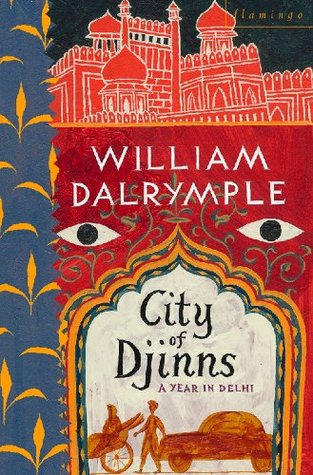More on this book
Community
Kindle Notes & Highlights
Although during my first year in Delhi I remember thinking that the traffic had seemed both anarchic and alarming, by my second visit I had come to realize that it was in fact governed by very strict rules. Right of way belongs to the driver of the largest vehicle. Buses give way to heavy trucks, Ambassadors give way to buses, and bicyclists give way to everything except pedestrians. On the road, as in many other aspects of Indian life, Might is Right.
Outside, you could hear the dull drone of the Karachi traffic. The city kept reminding me of the Gulf: the new motorways, the glossy high-rise buildings, the Japanese cars. But when you talked to the exiles it was the Palestinians who came to mind. Each one treasured his childhood memories like a title-deed. Each one knew by heart the stories of the catastrophe, the massacres and the exodus; the forty-year-old tales of exile flowed from everyone’s lips like new gossip. Each one talked about the old city as if it remained unchanged since the day they had departed. ‘Have you ever been to Gulli
...more
This highlight has been truncated due to consecutive passage length restrictions.
Moreover they always felt that the prophecy—whoever builds a new city in Delhi will lose it—would come true. If ever anybody raised the subject of New Delhi my father would always quote the Persian couplet in a most gloomy voice. And of course it did come true. Whoever has built a new city in Delhi has always lost it: the Pandava brethren, Prithviraj Chauhan, Feroz Shah Tughluk, Shah Jehan … They all built new cities and they all lost them. We were no exception.’
‘In retrospect,’ I said. ‘Do you think British rule was justified?’ Iris mulled over the question before answering. ‘Well, at the time we certainly didn’t think of ourselves as wicked imperialists,’ she said, answering slowly. ‘Of course not. But you see, although people of my generation were very keen on Gandhi and Indian Independence, we were still very careless. We didn’t give much thought to the question of what on earth we were doing to that country and its people. ‘That said, I can’t forget the sacrifices made by the "wicked" imperialists over the centuries—the graves, so many very
...more
This was Rajpath—once the Kingsway—one of the great ceremonial ways of the world. It was planned as an Imperial Champs Elysées—complete with India Gate, its own butter-coloured Arc de Triomphe. But it was far wider, far greener, far more magnificent than anything comparable in Europe. On either side ran wide lawns giving on to fountains and straight avenues of eucalyptus and casuarina. Beyond, canals running parallel to the road reflected the surroundings with mirror-like fidelity.
Other travellers were equally amazed by the size of these palaces. Another Englishman, James Forbes, arrived in Shahjehanabad a few months later to find that the Emperor had arranged for him to be quartered in the crumbling palace of Safdar Jung, once the most magnificent private palace in the city. Having explored the enormous edifice in which he and his companions had spent their first night, Forbes suddenly realized that their lodgings represented only a fraction of the whole palace. ‘In the evening, on taking a more complete view of this Mogul mansion, [we] were surprised to find the
...more
Even in the home of his closest friend, Skinner was unable to escape the growing colour prejudice of the British. In the Spanish Americas it was military heroes of mixed Indian and colonial parentage—men like Bolivar—who came to dominate and rule the colonies. But India was different. As Skinner’s career demonstrated, Hindus and British were both too proud of their blood for ‘half-castes’ ever to be really successful. As the nineteenth century progressed, such horrible prejudice only increased. Any hint of ‘black blood’ brought out the worst of Victorian bigotry, and in Delhi, Skinner’s
...more
This highlight has been truncated due to consecutive passage length restrictions.
Twenty-two years later the period was brought to a bloody close by the uprising of 1857. The hopes of a happy fusion of British and Indian culture, promised during the Twilight, were forgotten in the massacres which initiated and the hangings which followed the Indian Mutiny. The recapture of Delhi by the British on 14 September 1857 led to the wholesale destruction of great areas of the city. The Red Fort was plundered and much of it razed to the ground; what remained of one of the world’s most beautiful palaces became a grey British barracks. It was only by a hair’s-breadth that the great
...more
This highlight has been truncated due to consecutive passage length restrictions.
Safdarjung interested me because his life seemed to encapsulate perfectly the intriguing but cataclysmic half-century that linked the Mughal high noon at the close of the seventeenth century with the decay and disintegration of the Twilight fifty years later. When Safdarjung arrived from Persia, Aurangzeb was still Emperor and Delhi was still the richest, most magnificent and most populous city between Istanbul and Edo (Tokyo); with its two million inhabitants it was far larger than either London or Paris. Its army was invincible; its palaces unparalleled; the domes of its many mosques quite
...more
This highlight has been truncated due to consecutive passage length restrictions.


